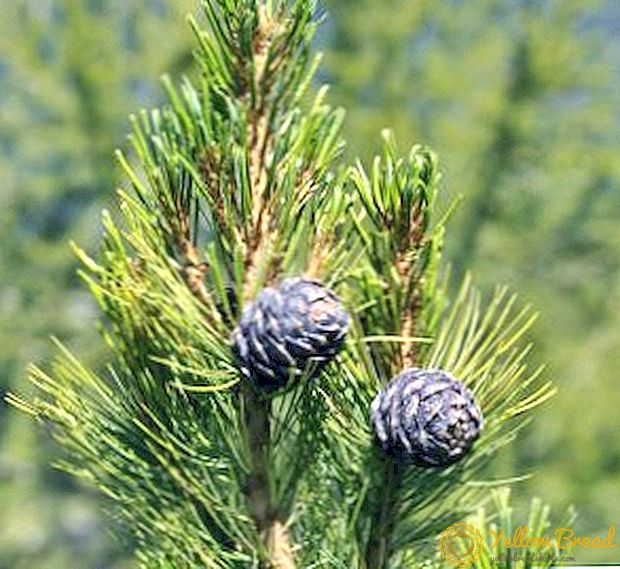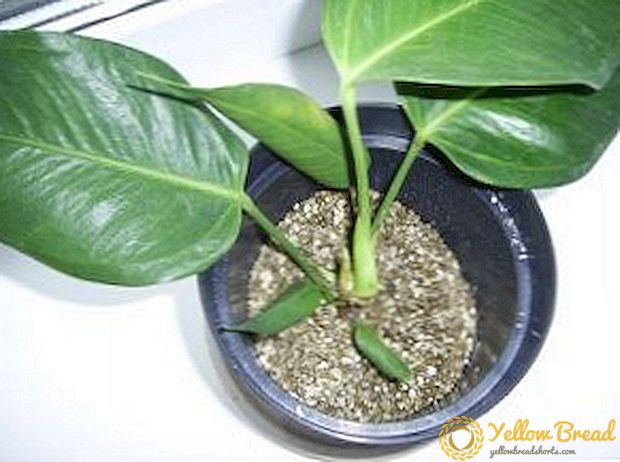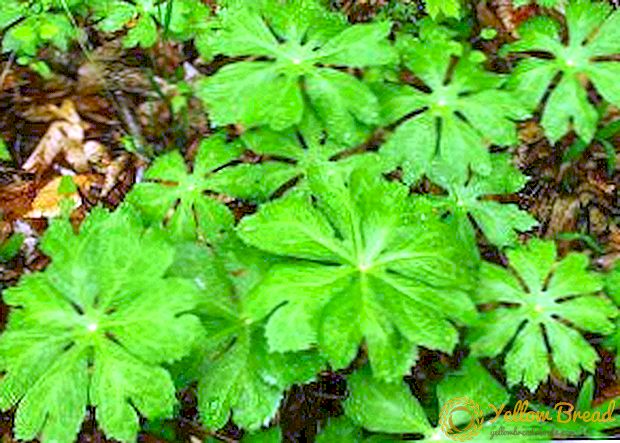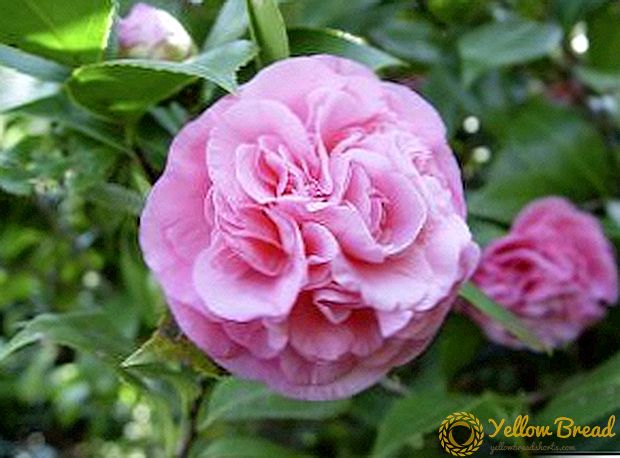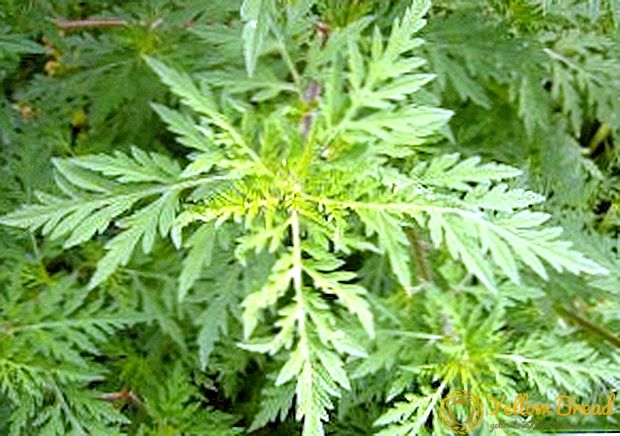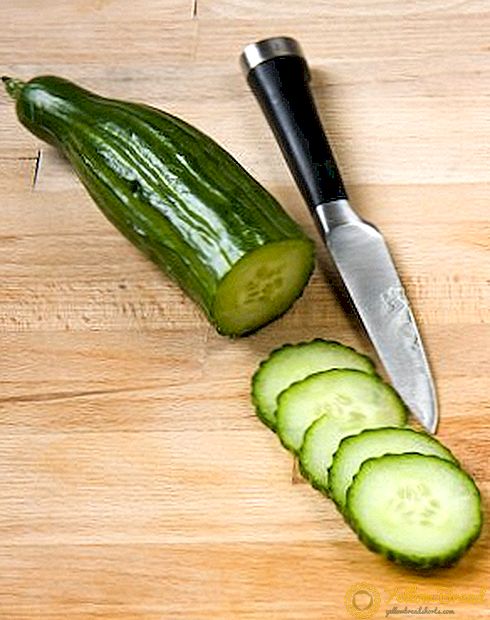 Potassium sulfate (potassium sulfate) - one of the best highly concentrated fertilizers for plants, which is used to feed plants that do not tolerate chlorine. It is used for feeding plants in greenhouses and in open ground. The fertilizer is suitable for both pre-sowing soil preparation and for dressing during the vegetative stage. Today we will tell you what it is, let's talk about its physicochemical properties, how it is used in the garden and the garden, and what are the safety measures when working with fertilizer.
Potassium sulfate (potassium sulfate) - one of the best highly concentrated fertilizers for plants, which is used to feed plants that do not tolerate chlorine. It is used for feeding plants in greenhouses and in open ground. The fertilizer is suitable for both pre-sowing soil preparation and for dressing during the vegetative stage. Today we will tell you what it is, let's talk about its physicochemical properties, how it is used in the garden and the garden, and what are the safety measures when working with fertilizer.
- The composition of potassium sulfate
- Physicochemical properties
- How to apply fertilizer in the garden
- Instructions for use for crops
- Application in the garden
- How to fertilize a vegetable garden
- The use of potassium sulfate in horticulture
- Security measures and storage of potassium sulfate
The composition of potassium sulfate
Potassium sulfate, what is it? - this is an inorganic compound, potassium salt of sulfuric acid. Chemical formula K2SO4. It contains about 50% of the macronutrient potassium and oxygen, as well as a small percentage of sulfur oxide, calcium, sodium, iron oxide, which are extremely important for harmonious plant growth; but they are so few in composition that they may not be taken into account when using other types of fertilizers. Mineral forms of pure K2SO4 relatively little. If we talk about how to get a fertilizer, then you can do it: 
- industrial methods, which are based on the exchange reactions of various sulphates with KCl (As a result, the inorganic compound is very contaminated by-products).
- in the laboratory (displacement from unstable or weak acids, from potassium oxide, from alkali and dilute acid, by oxidation of potassium sulfide, from potassium hydrosulfate, from potassium peroxide).
- heating to a temperature of 600 ° C.
- oxidizing sulfur with potassium bichromate.

Physicochemical properties
Physical properties include:
- It is well soluble in water and does not undergo hydrolysis.
- It is not soluble in pure ethanol or in concentrated alkaline solutions.
- It has a bitter-salty taste.
- Crystallized look. The crystals are small, often white or yellow.
- With sulfur oxide forms pyrosulphate.
- Restored to sulfide.
- Like all sulphates, it interacts with soluble barium compounds.
- As a dibasic acid salt, forms acid salts.
How to apply fertilizer in the garden
This fertilizer has found its application in agriculture. It is so popular due to the fact that it is able to increase the content of sugar and vitamins in fruits, has a positive effect on the quality and volume of the crop, contributes to the successful wintering of shrubs and fruit and berry trees and can be used on various soils.
Its effectiveness is best manifested in sod-podzolic soils (poor in potassium) and peat soils. 
On chernozem it is used most often for those crops that absorb a lot of sodium and potassium (sunflower, sugar beet, roots). On gray and chestnut soils, it is used depending on the cultivation technology and the type of culture. On acidic soils, it is more effective when using lime. Increases the quantity and quality of the crop also when used in conjunction with nitrogen and phosphate fertilizers. 
Potassium sulfate can be used both indoors and outdoors, as well as fertilizer for indoor plants.
It is brought in the spring or in the fall during the main digging of the soil, or as top dressing during growth. You can make it in three main ways - in dry form when digging the ground; together with irrigation (the required amount of potassium sulfate is dissolved in water and introduced under the roots of flower and vegetable crops); by spraying green mass and fruit with fertilizer dissolved in water. Potassium sulfate can be used for such groups of plants:
- sensitive to chlorine (potatoes, grapes, flax, tobacco, citrus).
- consuming a lot of sulfur (legumes).
- Shrubs and fruit trees (cherry, gooseberry, pear, plum, raspberry, apple).
- cruciferous plants (cabbage, swede, turnip, turnip, radish).
Instructions for use for crops
The process of applying K2SO4 as a fertilizer should take into account the instructions for use for a particular crop. Instructions can be found on the packaging. The application rate of potassium sulfate as a fertilizer for different crops is different, and the dosage is dictated by the amount of consumption of certain plants and the individual characteristics of plants. Fertilizer can be applied in dry form or in the form of a solution. A positive result will be visible soon.
Application in the garden
Fruit trees, due to fertilizing with potassium sulfate, tolerate severe frosts more easily. Under fruit trees, it is best to apply fertilizer before planting, either transplanting into a hole, or along a stem, while making indentations into the soil. Potassium sulfate application rate for fruit trees - 200-250 g of substance per tree.
How to fertilize a vegetable garden
Potassium sulfate as a fertilizer has found its application in the garden. Fertilizer of vegetables (cabbage, radish, cucumbers, eggplants, bell peppers, tomatoes, etc.) increases their yield, besides its use for planting seedlings contributes to the accumulation of vitamins.Under tomatoes and cucumbers fertilizer is applied when digging the soil, as the main application, the recommended rate is 15-20 g per square meter. Fertilizer is useful for root crops (potatoes, carrots, beets, cabbage), and is introduced into the soil when digging in the amount of 25-30 g per square meter. For cabbage, lettuce and greens you need 25-30 g of potassium sulfate per square meter, and it is best to fertilize the soil when digging.
The use of potassium sulfate in horticulture
It is widely used in gardening, as potassium is well absorbed from it, which is necessary for obtaining a high-quality and generous harvest, and it does not contain chlorine. For berry bushes, it is recommended to add 20 g of potassium sulfate per square meter to the soil, best of all, before flowering, during the growing season.
He also feeds on grapes. This is done in cloudy weather. 20 g of potassium sulfate is diluted in 10 liters of water, 40 g of superphosphate is also added there.
Grapes absorbs a lot of potassium, so fertilizer is recommended annually. Under strawberries and strawberries, potassium sulfate is introduced during the flowering of plants, 15-20 g per square meter.
Potassium fertilizers are very useful for flowers, in particular, for roses.Potassium sulphate for roses is considered the very first dressing. It is made once a week in the amount of 15 g per square meter. And in the period of flowering of roses it is recommended to add potassium nitrate.
Security measures and storage of potassium sulfate
Working with potassium sulfate, we must not forget about the measures of personal safety, because it is a chemical compound. First of all, do not forget to read the instructions on the package, which sets out information about the rules of operation of potassium sulfate and its storage.
Before starting to use this substance, you should wear gloves, a mask or a respirator.which will protect you from skin and mucous vapor, toxic dust or liquid. At the end of the work is necessary wash hands and face with clean water and soap.
K2SO4 it is easily stored and transported, because it is not explosive and combustible, even though it contains sulfur.The main requirement for a substance is to protect it from water and high humidity, dust and other environmental factors. It is best to use the dissolved powder immediately and not to store it for a long time even in tightly closed containers.
K2SO4 It is very important for plants during the ripening of their fruits and is very significant for further storage of the crop. Using potassium sulfate as a fertilizer, you will help the plants to better tolerate the lack of moisture, to be resistant to various pests and diseases.

